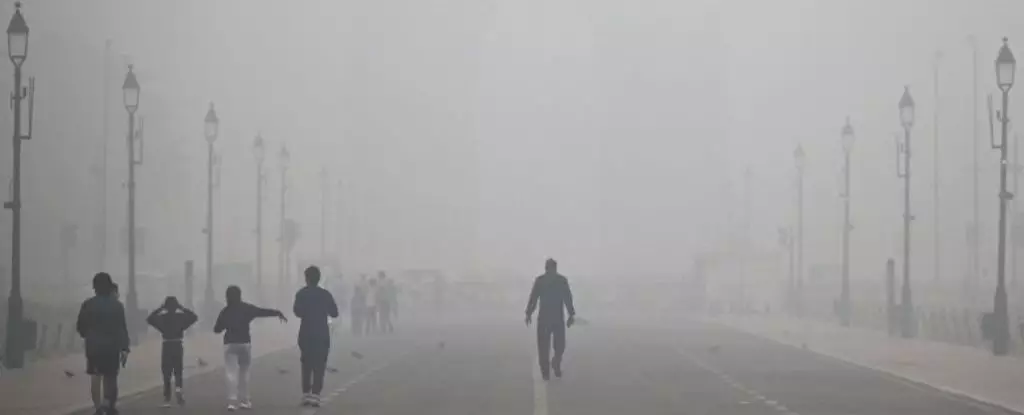Lung cancer has long been associated with tobacco use, a dangerous habit that’s been embedded in societal consciousness for decades. Yet, a disturbing new trend has emerged: an increasing incidence of lung cancer among individuals who have never smoked. This phenomenon is transforming our understanding of lung carcinogenesis and highlighting a pressing environmental threat—air pollution. As research uncovers the subtle yet profound ways in which polluted air contributes to genetic mutations in lung cells, it beckons us to re-evaluate the root causes of this deadly disease and confront a silent, pervasive adversary. The conventional narrative centered solely on smoking is incomplete; the truth is far more complex and alarming.
Deciphering the Molecular Footprints of Pollution and Disease
Recent genomic studies have provided compelling evidence linking outdoor air pollution to the mutational landscape of lung tumors in non-smokers. An expansive analysis involving 871 individuals from diverse continents reveals that regions with elevated pollution levels are correlated with specific genetic alterations—particularly mutations in critical genes like TP53 and EGFR. These genes are central to cell cycle regulation and tumor suppression. Mutations in TP53, a gene often called the “guardian of the genome,” undermine the cell’s ability to prevent malignant transformation, whereas EGFR mutations are key drivers in certain lung adenocarcinomas.
More strikingly, the research identified a distinctive mutational signature known as SBS4—a pattern strongly associated with exposure to carcinogens found in tobacco smoke—being surprisingly prevalent in non-smokers living in polluted environments. Those with higher pollution exposure were nearly four times more likely to exhibit SBS4 signatures. This indicates that particulate matter and chemical pollutants act as potent mutagens, paralleling the damaging effects of smoking at a molecular level. Yet, unlike tobacco, which is a known and well-studied risk factor, the components of air pollution that cause these mutations are still being unraveled.
Furthermore, the study uncovered the presence of a novel mutational signature—SBS40a—that seems independent of environmental exposure. Its origins are shrouded in mystery, raising questions about other, perhaps intrinsic, factors influencing lung carcinogenesis. This uncharted territory exemplifies how pollution-related research is revealing not just the risks we understand but also highlighting gaps in our knowledge, emphasizing the need for deeper molecular investigations.
Reassessing Risk and Responsibility in a Polluted World
The implications of these findings stretch far beyond the laboratory. They challenge policymakers and public health officials to confront the invisible yet tangible harm caused by polluted air. For many urban dwellers, the air they breathe daily is a mixture of fine particles, soot, and chemical compounds that subtly undermine their genetic integrity—yet the connection often remains unrecognized.
In regions with poor air quality, the risk posed to non-smokers is substantial. Breathing polluted air may be equivalent to smoking multiple cigarettes a day in its mutagenic potential. This comparison infuriates some, who argue that environmental standards should be more rigorously enforced to mitigate this risk. It also complicates the narrative surrounding lung cancer prevention because it shifts some responsibility from individual choices to societal and governmental accountability. Clean air initiatives become not just environmental concerns but immediate health imperatives, especially as genetic evidence underscores their potential role in carcinogenesis.
Moreover, the current research highlights limitations—most notably, the inability to quantify individual exposure levels precisely. Regional pollution data serve as a proxy, yet they cannot fully capture personal differences in exposure due to lifestyle, occupation, or indoor pollution sources. Additionally, self-reported smoking histories may be underreported, muddying the waters of causality. Nevertheless, the overarching message remains clear: air pollution fundamentally transforms the genetic landscape of lung cells, increasing the risk of malignancy independently of smoking behavior.
The Path Forward: Turning Science Into Solutions
Understanding the molecular effects of air pollution on lung tissue is only the beginning. The real challenge lies in translating this knowledge into effective intervention strategies. Public health campaigns must now incorporate air quality awareness as a pillar of cancer prevention, emphasizing that staying smoke-free is insuffficient if the air in one’s environment is toxic.
Policymakers should prioritize stricter regulation of emissions, invest in cleaner urban infrastructure, and promote policies that reduce industrial pollution and vehicle emissions. One cannot ignore that socioeconomic factors heavily influence exposure levels, meaning that marginalized communities often bear the brunt of this invisible threat. Addressing these disparities is as crucial as advancing scientific research.
Additionally, the discovery of unique mutational signatures in non-smoker lung cancer patients calls for personalized medicine approaches. Genetic profiling could become a standard part of diagnosis, helping identify individuals at heightened risk due to environmental exposures. Such precision medicine could revolutionize early detection and treatment, ultimately saving lives.
In the broader context, this research forces a paradigm shift: lung cancer must be viewed not solely as a consequence of personal lifestyle but as a complex interplay between genetics and environment. It demands a collective response, blending scientific innovation, policy reform, and social responsibility. The air we breathe is more than just a backdrop to daily life; it is a critical factor in our health and well-being—an insidious contributor to one of humanity’s most lethal diseases. Confronting this crisis requires unwavering commitment and a proactive stance that acknowledges the vital importance of a cleaner, healthier environment for all.

